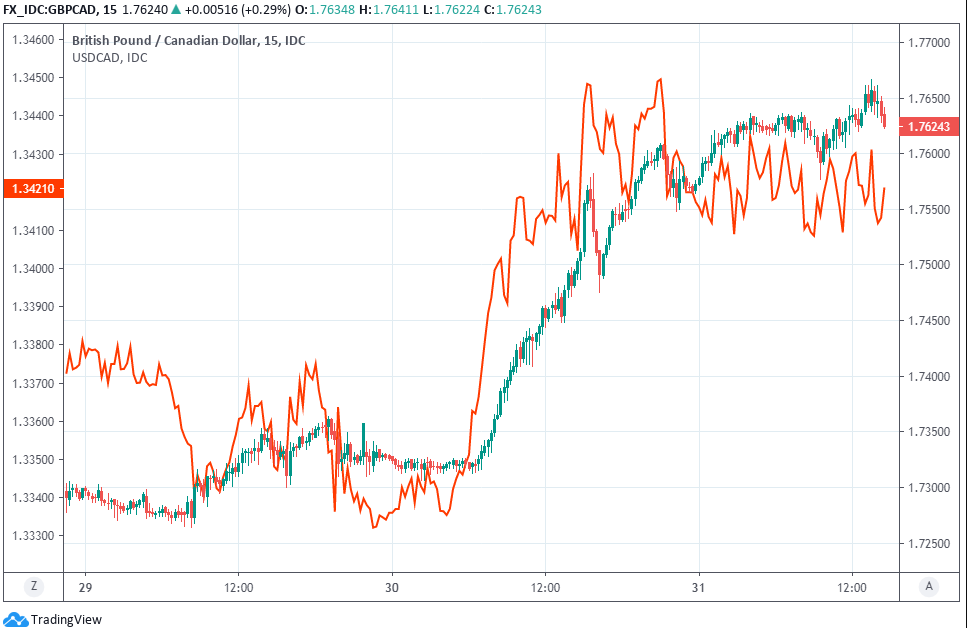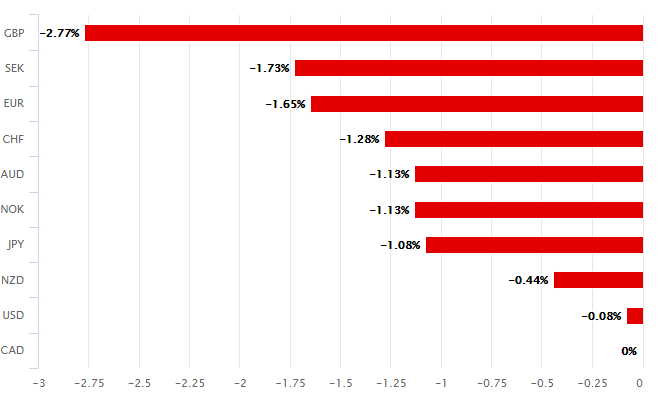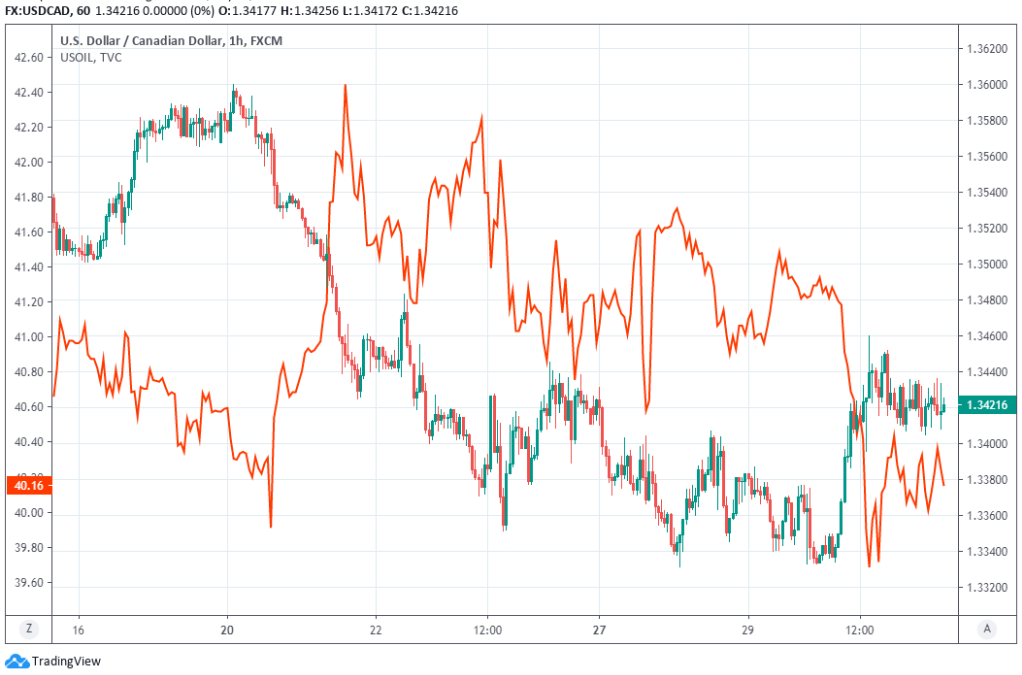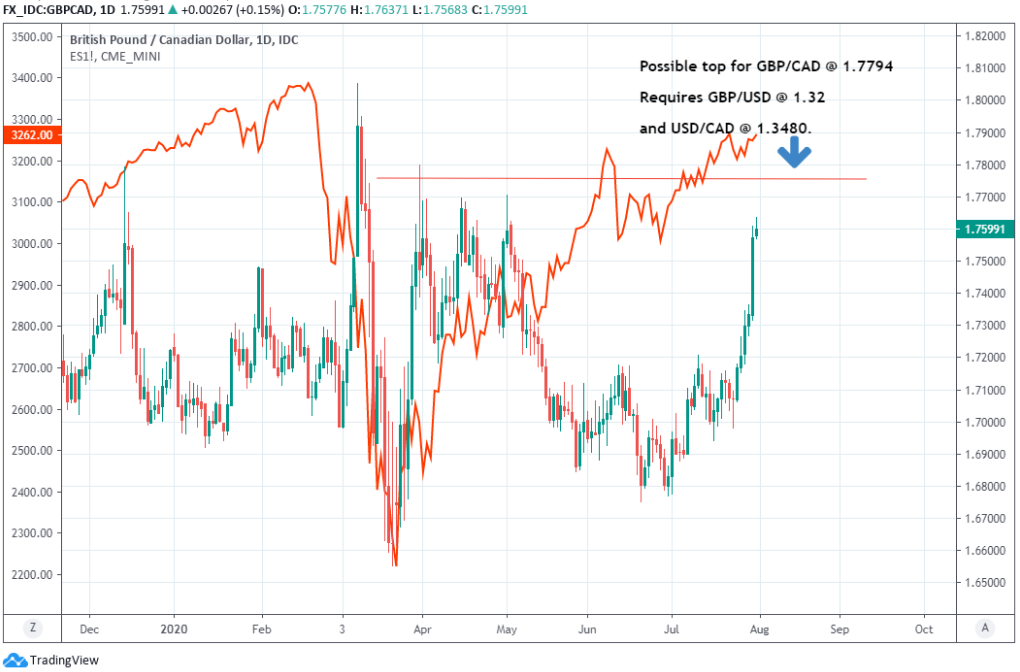Canadian Dollar Struggles as Risk Appetite Ebbs, GDP Surprise Marred by Sluggish June Estimate
- Written by: James Skinner

Image © Pavel Ignatov, Adobe Stock
The Canadian Dollar struggled Friday even after official estimates revealed that May's rebound in the economy was larger than economists expected, as risk appetite appeared to ebb and a preliminary estimate from Statistics Canada warned of only a limited further rebound in June.
Canada's economy grew by 4.5% in May, surprising an economist consensus that had looked for only a 3.5%, while an advanced estimate from Statistics Canada indicated the recovery picked up only tepidly in June.
June GDP growth was just +5.0% so little more than the rate of change seen in May, which all but confirms an estimated -12% contraction when the second quarter is compared with the opening months of the year.
"While such a decline was expected, it was worse than the what was seen earlier in the week in the US for the same quarter, as Canada enacted restrictions earlier and eased them less aggressively. The good news is that the cautiousness has kept virus cases under control north of the border, suggesting Canada's economy is in a position to outperform that of the US in Q3," says Royce Mendes, an economist at CIBC Capital Markets.

Above: Pound-to-Canadian Dollar rate shown at 15-minute intervals alongside USD/CAD rate.
But large parts of Canada's economy remained under lock and key later than many others including its larger North American neighbour, with many provinces having held off on significant relaxations of restrictions until July.
The Canadian Dollar got little help from the GDP data having remained on its back foot against a range of currencies including Pound Sterling and the U.S. Dollar, although it pared declines against the smaller commodity currencies like the Aussie and New Zealand Dollars following the data.
Canada's Dollar was the worst performing major currency of the week Friday after having overlooked an advance by S&P 500, seemingly preferring to follow WTI crude oil futures and the U.S. Dollar lower against all majors.
"Traders are trying to buy the dips this morning as month-end dollar selling seems to have run its course," says Eric Bregar, head of FX strategy at Exchange Bank of Canada. "There’s been a lot of chatter about CAD’s under-performance yesterday amidst these flows and we think this was largely because of September WTI’s 5% implosion; a sell-off that has now ruined the oil market’s upside breakout pattern from July 21. We think some pre-hedging ahead of today’s massive 1.3400 option expiry (now valued at $2.2blnUSD) also attracted CAD sales. Canada just reported a slightly better than expected May GDP figure (+4.5% vs +3.5%), but the market’s lack of reaction tells you everything you need to know...old news…move on."

Above: Canadian Dollar performance agaisnt major rivals this week. Source: Pound Sterling Live.
Canadian Dollar losses accrued as U.S. Dollars were bought back ahead of the weekend, which is the last opportunity for U.S. lawmakers to extend enhanced welfare benefits for households before they expire with the July month.
Pre-election politics have so far stymied the bipartisan spirit that produced the expiring funding from the original $2 trillion CARES Act.
The Dollar was correcting higher while stock markets and risk currencies like the Euro were faltering on Friday, a trend that some analysts see enduring through the traditional holiday month of August, which is typically marrred by thin trading volumes and reduced risk appetite. Fertile ground for a Dollar rebound.
"USD weakness remains the primary theme. Dollar shorts continue to extend as month-end dynamics also come into play. EURUSD traded above 1.19 for the first time in over two years but has returned to the 1.1800/50 area. This contains a cluster of major technical attractors and should provide support. Elsewhere, range breaks are being tested across much of the G10, but USDCAD remains an exception," says Mark McCormick, global head of FX strategy at TD Securities. "We look for 1.3430 to be the interim pivot, while a push below 1.3316 could see a catch-up move toward 1.32."
Above: USD/CAD rate shown at hourly intervals alongside WTI crude oil futures price (orange line, left axis).
Meanwhile, the Pound-to-Canadian Dollar rate continued its advance late into Friday having reached three-month highs earlier in the session following a mid-week breakout from a weeks-long range.
"Sterling remains remarkably resilient despite the fact that the UK government has announced tighter lockdown measures today for a large part of northern England in a bid to stamp out a flare up in coronavirus cases. Rather perhaps, investors are impressed by a stronger than expected gain for the July Nationwide House Price Index which showed a 1.7% m/m rise and supports the impression that the housing market is seeing a decent rebound after the early year slump," says Shaun Osborne, chief FX strategist at Scotiabank.
Sterling may be likely to trade in a 1.7555-to-1.7659 range Friday but once past the weekend, it could rise to between 1.7689 and 1.7794 over the coming days.
Pound Sterling has advanced against all major counterparts this week with its largest gains coming against both the U.S. Dollar and Canadian Loonie, leaving the Pound-to-Dollar rate 2.78% higher for the period on Friday and the Pound-to-Canadian Dollar rate 2.76% higher at the time of writing.
Matching gains for GBP/USD and GBP/CAD illustrate the extent of the Canadian underperformance this week, which has come alongside more punishing losses for the U.S. Dollar against all majors.
Above: GBP/CAD rate at daily intervals alongside S&P 500 index futures (orange line, left axis). Click for larger image.






